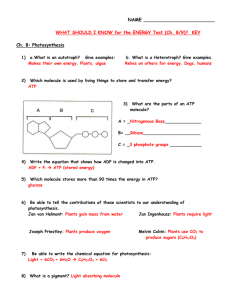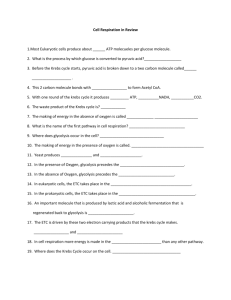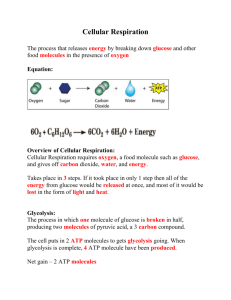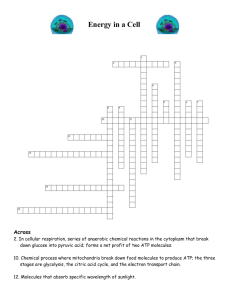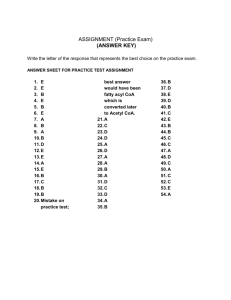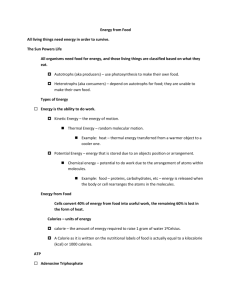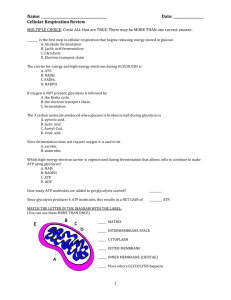Chapter 5. Microbial Metabolism - NAU jan.ucc.nau.edu web server
advertisement
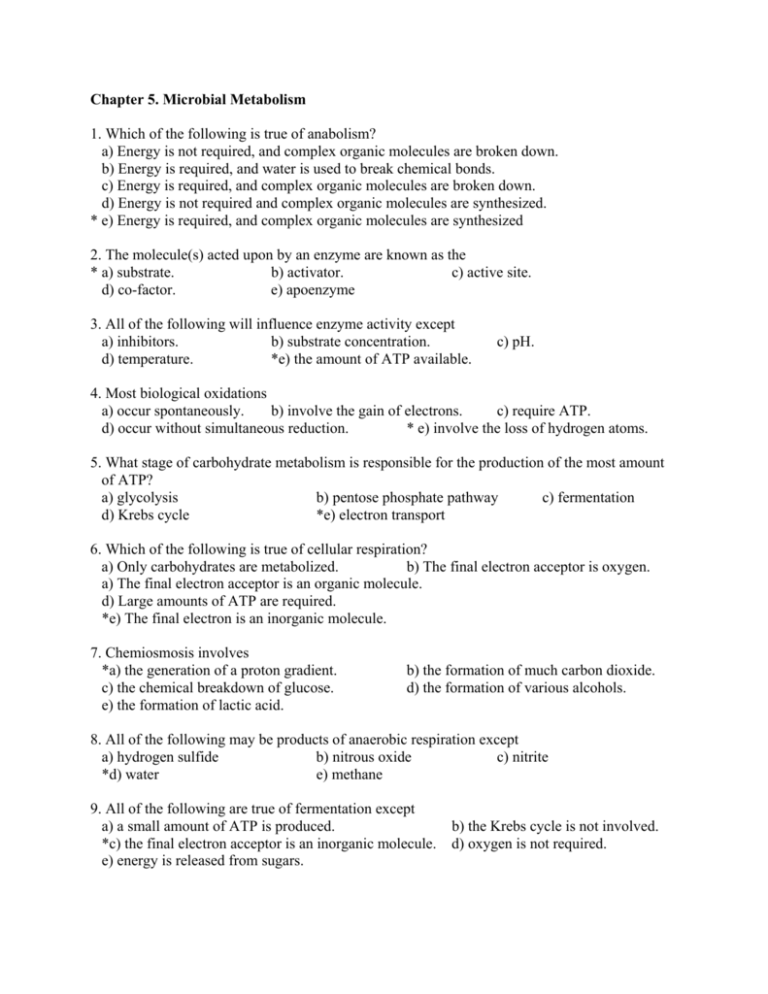
Chapter 5. Microbial Metabolism 1. Which of the following is true of anabolism? a) Energy is not required, and complex organic molecules are broken down. b) Energy is required, and water is used to break chemical bonds. c) Energy is required, and complex organic molecules are broken down. d) Energy is not required and complex organic molecules are synthesized. * e) Energy is required, and complex organic molecules are synthesized 2. The molecule(s) acted upon by an enzyme are known as the * a) substrate. b) activator. c) active site. d) co-factor. e) apoenzyme 3. All of the following will influence enzyme activity except a) inhibitors. b) substrate concentration. d) temperature. *e) the amount of ATP available. c) pH. 4. Most biological oxidations a) occur spontaneously. b) involve the gain of electrons. c) require ATP. d) occur without simultaneous reduction. * e) involve the loss of hydrogen atoms. 5. What stage of carbohydrate metabolism is responsible for the production of the most amount of ATP? a) glycolysis b) pentose phosphate pathway c) fermentation d) Krebs cycle *e) electron transport 6. Which of the following is true of cellular respiration? a) Only carbohydrates are metabolized. b) The final electron acceptor is oxygen. a) The final electron acceptor is an organic molecule. d) Large amounts of ATP are required. *e) The final electron is an inorganic molecule. 7. Chemiosmosis involves *a) the generation of a proton gradient. c) the chemical breakdown of glucose. e) the formation of lactic acid. b) the formation of much carbon dioxide. d) the formation of various alcohols. 8. All of the following may be products of anaerobic respiration except a) hydrogen sulfide b) nitrous oxide c) nitrite *d) water e) methane 9. All of the following are true of fermentation except a) a small amount of ATP is produced. *c) the final electron acceptor is an inorganic molecule. e) energy is released from sugars. b) the Krebs cycle is not involved. d) oxygen is not required. 10. What type of fermentation involves the production of both citric acid and butanol? a) decarboxylation b) deamination *c) heterolactic d) homolactic e) alcohol 11. An organism that derives energy from chemicals and uses carbon dioxide is known as a a) chemoheterotroph. b) photoheteroptroph. c) photoautotroph. *d) chemoautotroph. e) chemosaprophyte. 12. Most fatty acids are synthesized from a) amino acids. b) purines. *d) acetyl CoA. e) ATP. c) glycerol. 13. The main purpose of fermentation is a) the production of chemicals useful to the organism. c) the continuation of glucose breakdown. e) the production of small amount of ATP. *b) the regeneration of NAD. d) the removal of toxic chemicals. 14. How many molecules of ATP and NADH are produced during glycolysis? a) 2; 1 b) 1;2 *c) 2;2 d) 1;1 e) 0;2 15. Where glycolysis and Krebs cycle take place in bacteria? a) both in the mitochondria *b) both in the cytoplasm c) cytoplasm; cell membrane d) cytoplasm; mitochondria


